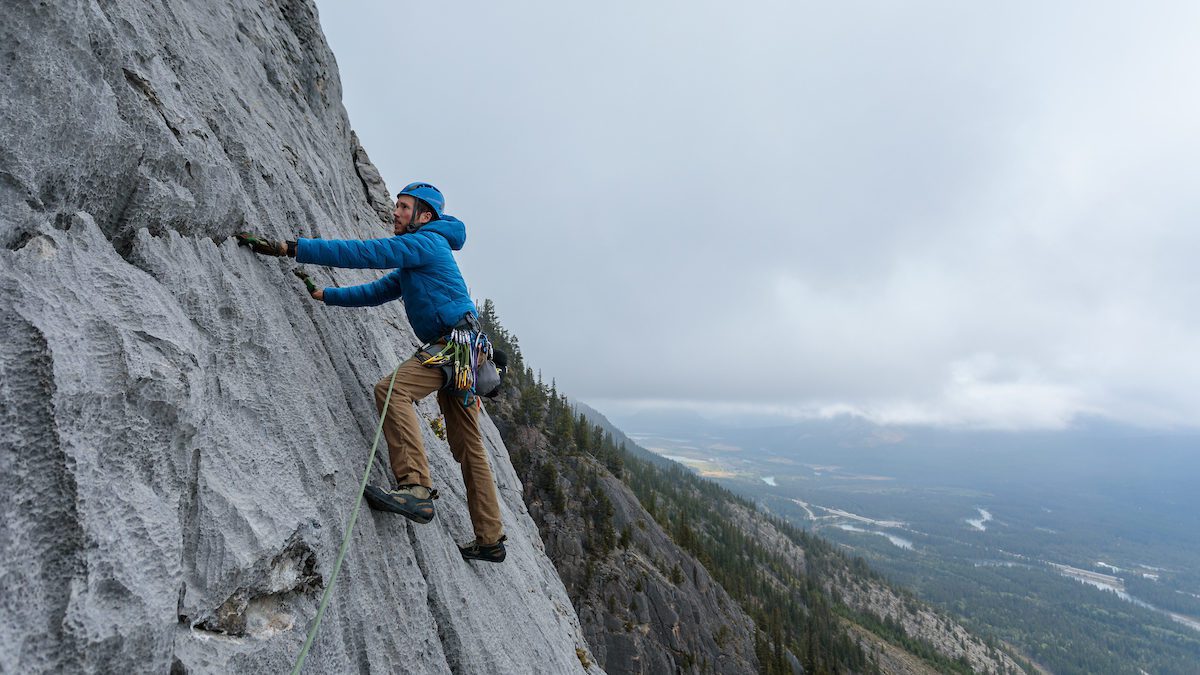Bolted Multi-Pitch Routes are Not Sport Climbs
Bolted multi-pitch routes often have longer run-outs and looser rock than sport climbs at crags
 Photo by: Tim Banfield of Mark Howell on Aftenroe in Alberta
Photo by: Tim Banfield of Mark Howell on Aftenroe in Alberta
There are more bolted multi-pitch routes across Canada than ever before and many of them are far more popular than their older, more run-out trad counterparts. From the east to west coast, fully protected multi-pitch routes are being established at a fast rate. These big bolted routes can be safer than anchor-to-anchor wandering adventures that require a good eye for tricky gear placements, but there are still a number of dangers that you should know about.
Sport climbing focuses on strength, endurance and technique, whereas fully bolted multi-pitches are more about climbing through big terrain without worrying about placing your own protection. There’s often no indication of how well a route is bolted, so check topos and online forums (sendage.com and mountainproject.com) for up-to-date beta. The line between a sport climb and bolted multi-pitch is sometimes fuzzy, so if you’re not sure then be prepared for the latter.
There are many big multi-pitch sport routes in Canada, such as Don’t Rock the Boatswain, a six-pitch 5.13a on Grotto Mountain and Blue Jeans 5.13 on Yamnuska, where the bolts are next to clipping holds and the climbing is difficult, but they’re different from easy/moderate bolted multi-pitches. Below are things you should expect on bolted multi-pitch routes versus bolted sport climbs.
Bolted Multi-Pitches
Bolting: Sport routes are bolted with fixed protection every few metres apart, ensuring that if you fall then you’ll hopefully stay off the ground. Bolted multi-pitches have bolts that can range from a few feet to 10 metres apart depending on the terrain. Be prepared for long run-outs.
Anchors: The anchors are always fixed on sport routes and bolted multi-pitch, but you might not be able to descend from a bolted multi-pitch because of the nature of the route. So you need to be prepared to reach the top and follow the walk-off. Always bring some leaver-biners on a bolted multi-pitch in case you need to bail, as there might not be chains or ring bolts.
Route Finding: Sport routes are designed to take the route-finding out of the equation with bolts close together and often-chalked holds. Bolted multi-pitches often require some route-finding to locate the next bolt or anchor. Bring a topo and know how to use it.
Rock Quality: Sport routes are cleaned for your enjoyment and almost never have loose rock. Bolted multi-pitches almost always have some loose rock or scree on ledges. Always be aware of broken stone or friable rock. Big bolted routes can be up to 1,000 metres, and it would take years to clean every inch. Route builders will make sure that key holds are secure and cruxes are safe, but always expect loose rock.
Being Prepared: How prepared you need to be will depend on the route you’re doing. If your objective is a four-pitch 5.8 above a river, then you’re probably not as concerned about thunderstorms as you would be if you’re on a 15-pitch 5.11 in the alpine. Plan ahead, bring the appropriate clothing, bring food and water and always bring a phone or radio to communicate.
Stacked Teams Should you climb beneath another team of climbers? It depends on the route, how high the other climbers are and the rock quality. Always wear helmets and don’t plan to pass the team ahead of you. Have backup plans. Ice climbers sometimes write the name of their objective in snow on their vehicle to let others know, maybe leave a note on your back window with the name of the route you’re climbing to give others a heads-up.


